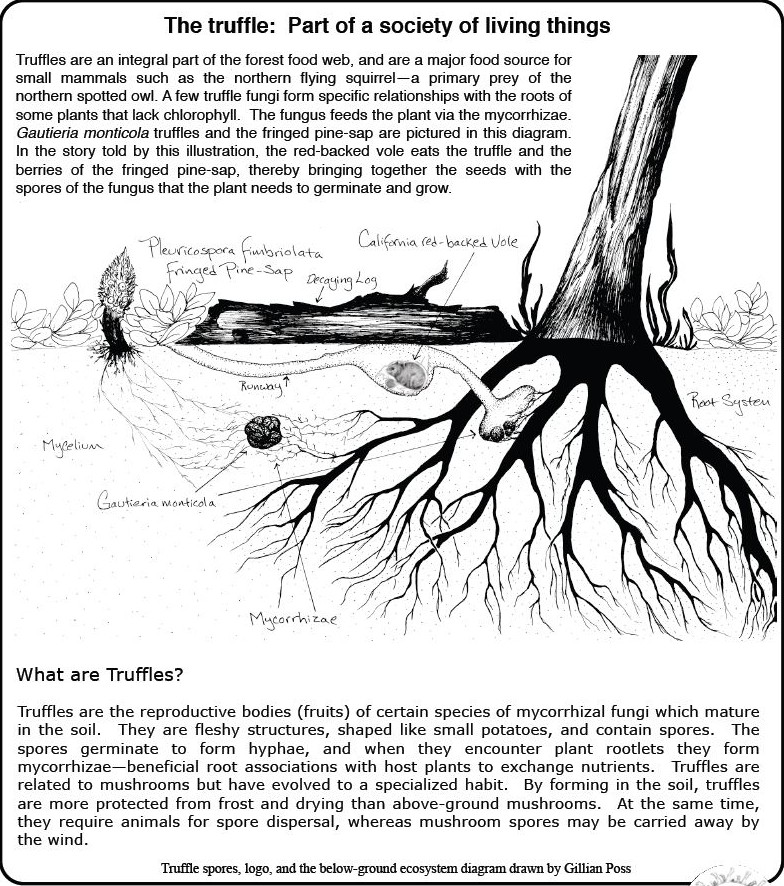

Why should I join NATS? Meetings are open to the public but most forays are restricted to NATS members. Members receive foray announcements and meeting invitations by email, "The Truffler" newsletter, and the peace of mind that comes with supporting the NATS mission.
How do I join NATS? Annual membership dues (USD): $20 for the first family member, $10 for each additional family member in the same house over the age of 18 years of age. Children under the age of 18 in the same household are free. Businesses: $20 (USD). International memberships (USD): $20. You can join online, or download a membership form. NATS membership dues (and contributions to the Henry Pavelek Sr. Scholarship Fund) are fully tax-deductable.
Meetings: Most meetings are offered in person at OSU's Cordley Hall, Room 2602. Free parking is available in the lot at 27th & Orchard. All meetings are also available on Zoom, and with remote speakers sometimes only available on Zoom. NATS members receive an email link to the Zoom meeting; it's also posted on this website a day or two before the meeting.
NATS Meeting - Tuesday, June 10, 7:00 PM: The speaker will be Monika Richardson presenting "Ectomycorrhizal fungi associated with three co-occurring Pinus species on the Far North Coast of California." Northwest California is heavily forested with a high diversity of Ectomycorrhizal (ECM) tree species, yet fungal symbionts crucial to maintain these forest environments are understudied. Join NATS as Monika shares findings from her master’s thesis work comparing species of ECM fungi associated with 3 north coast California pine species. Distribution of these species offers a unique opportunity to investigate effects of biogeography, soil environment, and host tree species on pine-associated ECM fungi. This study elucidates fungal biodiversity and novel symbiotic associations that sustain regional pine forests. Her talk will also provide background on the importance of ectomycorrhizal symbiosis in Pacific Northwest forests.
Before joining the M.S. Biology program at Cal Poly Humboldt, Monika spent 7 years working for various government and nonprofit conservation organizations such as Golden Gate National Parks Conservancy, Mendocino Land Trust, and Feather River RCD. After years of being obsessed with identifying mushrooms, she decided to go for a master's degree to investigate the symbiotic mutualisms between fungi and plants. Her research is conducted on the unceded territories of the Yurok and Wiyot peoples of Northern California. When not looking for mushrooms, Monika spends her time surfing, co-managing a compost company, gardening, and enjoying the beautiful and wet Humboldt County. Monika is also one of NATS’s 2025 Pavelek Scholarship Awardees.
This will be a hybrid meeting, in person and on Zoom. The in person meeting will be in OSU's Cordley Hall, Room 2602. Free parking is available in the lot at 27th & Orchard. To participate via Zoom you must register ahead of time by clicking on https://forms.gle/zSMGVBJMB9SmWU6D6. If you want to share the Zoom meeting with an interested non-NATS member, forward the link so they can request an invitation. If you have difficulties or questions, email natrufflingsociety@gmail.com ahead of the meeting.
Hot off the press: NATS has developed an "Ethical, Sustainable and Common Sense Guide to Harvesting Truffles". By following these guidelines to protect the truffle environment and minimize harvest of immature truffles, we can help to ensure the sustainability of Oregon truffling.
Truffle Dog Training: NATS offers truffle dog training courses periodically, depending on demand. If you are interested, please contact Marilyn Hinds to put your name on the list. We will schedule a training session when we reach quorum, so let us know!
New Oregon law (ORS 164.813) requires a permit to harvest and transport special forest products, including truffles and mushrooms. Deputies are actively enforcing this regulation and violators face substantial fines.
